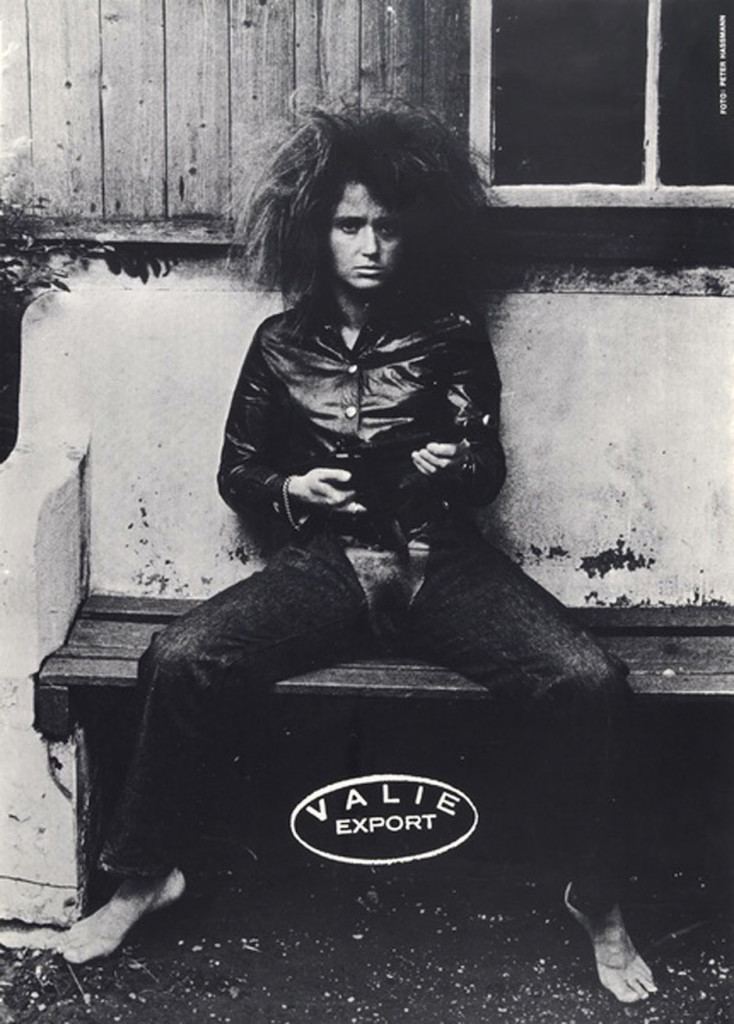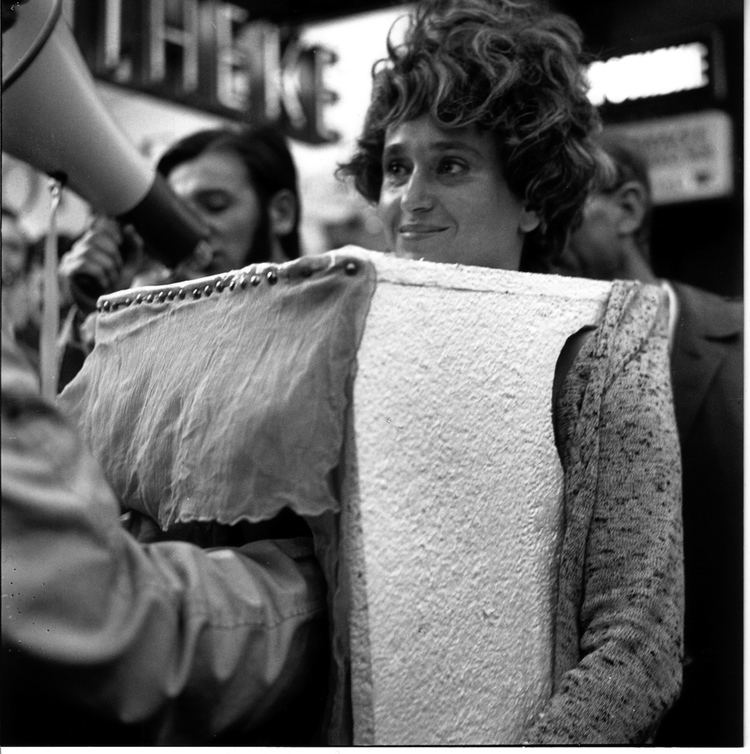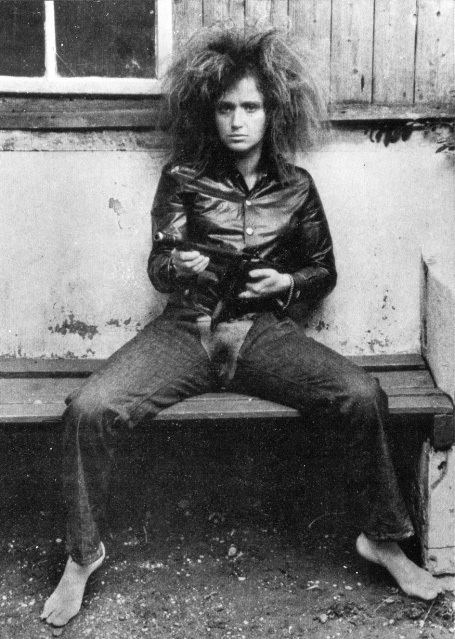Full Name Waltraud Lehner Website [3] | Name Valie Export Role Artist | |
 | ||
Awards Decoration of Honour for Services to the Republic of Austria Movies Invisible Adversaries, The Practice of Love, Menschenfrauen, I turn over the pictures of my voic, Seven Women‑‑seven Sins Similar People Peter Weibel, Ulrike Ottinger, Helke Sander, Chantal Akerman, Laurence Gavron | ||
VALIE EXPORT | Body Configurations | 2018
Valie Export (often written as 'VALIE EXPORT') (born May 17, 1940 in Linz as Waltraud Lehner, later Waltraud Höllinger) is an Austrian artist. Her artistic work includes video installations, body performances, expanded cinema, computer animations, photography, sculptures and publications covering contemporary arts.
Contents
- VALIE EXPORT Body Configurations 2018
- VALIE EXPORT I Created My Own Identity Artist Interview TateShots
- Biography
- Early career
- Works
- Exhibitions Selection
- Awards
- References

VALIE EXPORT – 'I Created My Own Identity' | Artist Interview | TateShots
Biography

Educated in a convent until the age of 14, Export studied painting, drawing, and design at the National School for Textile Industry in Vienna, and briefly worked in the film industry as a script girl, editor, and extra. Austrian feminism was forced to address the fact that by the 1970s there was still a generation of Austrians whose attitudes towards women were based on Nazi ideology. They also had to confront the guilt of their parents’ (mothers’) complacency within the Nazi regime. Export herself, before her political and artistic revolution, was a mother and a wife. In 1967, she changed her name to VALIE EXPORT (written in uppercase letters, like an artistic logo, shedding her father’s and husband’s names and appropriating her new surname from a popular brand of cigarettes). In conversation with Gary Indiana for BOMB magazine, Export described her name-change:

"I did not want to have the name of my father [Lehner] any longer, nor that of my former husband Hollinger. My idea was to export from my 'outside' (heraus) and also export, from that port. The cigarette package was from a design and style that I could use, but it was not the inspiration."

With this gesture of self-determination, Export emphatically asserted her identity within the Viennese art scene, which was then dominated by the taboo-breaking performance art of the Vienna Actionists such as Hermann Nitsch, Günter Brus, Otto Mühl, and Rudolf Schwarzkogler. Of the Actionist movement, Export has said, “I was very influenced, not so much by Actionism itself, but by the whole movement in the city. It was a really great movement. We had big scandals, sometimes against the politique; it helped me to bring out my ideas.” Like her male contemporaries, she subjected her body to pain and danger in actions designed to confront the growing complacency and conformism of postwar Austrian culture. But her examination of the ways in which the power relations inherent in media representations inscribe women’s bodies and consciousness distinguishes Export’s project as unequivocally feminist.
Early career

Export’s early guerrilla performances have attained an iconic status in feminist art history. Tapp- und Tast-Kino (Tap and Touch Cinema) was performed in ten European cities in 1968-1971. In this avowedly revolutionary work, Valie Export wore a tiny "movie theater" around her naked upper body, so that her body could not be seen but could be touched by anyone reaching through the curtained front of the "theater." She then went into the street and invited men, women, and children to come and touch her. The media responded to Export's provocative work with panic and fear, one newspaper aligning her to a witch. Export recalls, "There was a great campaign against me in Austria."
Some of her other works including, "Invisible Adversaries," "Syntagma," and "Korpersplitter," show the artist's body in connection to historical buildings not only physically, but also symbolically. The bodies attachment to the historical progression of gendered spaces and stereotyped roles represent Export's feminist and political approach to art.
Export’s 1973 short film, "Remote, Remote," exemplifies the painful ramifications of the female body conforming to societal standards. In this piece she digs at her cuticles with a knife for twelve minutes, representing the induced damage originating from the female body trying to maintain beauty standards and tradition.
In her 1970 photograph, “Body Sign Action,” Export portrays a politically charged agenda through her performance artwork. The piece features a tattoo of a garter belt on Export’s naked upper leg. The garter is not attached at the top and only attached to a sliver of a stocking at the bottom- therefore suspended on the leg. Instead of the garter objectifying the body, the body objectifies the garter, flipping constructed societal roles in relation to the female body.
In her 1968 performance Aktionshose:Genitalpanik (Action Pants: Genital Panic), Export entered an art cinema in Munich, wearing crotchless pants, and walked around the audience with her exposed genitalia at face level. The associated photographs were taken in 1969 in Vienna, by photographer Peter Hassmann. The performance at the art cinema and the photographs in 1969 were both aimed toward provoking thought about the passive role of women in cinema and confrontation of the private nature of sexuality with the public venues of her performances. Apocryphal stories state that the Aktionshose:Genitalpanik performance occurred in a porn theater and included Export brandishing a machine gun and challenging the audience, as depicted in the 1969 posters, however she claims this never occurred.
The contrast with what is usually called "cinema" is obvious, and is crucial to the message. In Export's performance, the female body is not packaged and sold by male directors and producers, but is controlled and offered freely by the woman herself, in defiance of social rules and state precepts. Also, the ordinary state-approved cinema is an essentially voyeuristic experience, whereas in Export's performance, the "audience" not only has a very direct, tactile contact with another person, but does so in the full view of Export and bystanders.
Export's groundbreaking video piece, Facing a Family (1971) was one of the first instances of television intervention and broadcasting video art. The video, originally broadcast on the Austrian television program Kontakte February 2, 1971, shows a bourgeois Austrian family watching TV while eating dinner. When other middle-class families watched this program on TV, the television would be holding a mirror up to their experience and complicating the relationship between subject, spectator, and television. 1977 saw the release of her first feature film, Unsichtbare Gegner. For this film's script, she collaborated with her former partner, Peter Weibel. Her 1985 film The Practice of Love was entered into the 35th Berlin International Film Festival.
Since 1995/1996 Export has held a professorship for multimedia performance at the Academy of Media Arts Cologne.
In her 1983 experimental film, Syntagma, Export attempted to reframe the female body by using a multitude of "...different cinematic montage techniques—doubling the body through overlays, for example". The film follows Export's belief that the female body has, throughout history, been manipulated by men through the means of art and literature. In an interview with "Interview Magazine", Export discusses her movie, Syntagma, and says, "The female body has always been a construction".
In another effort to expose the control of women by men, Export collected her powerful statements in a piece written for an exhibit she had organized titled MAGNA, Geminism: Art and Creativity. Within this piece titled "Women’s Art a Manifesto" (1972) she wrote empowering statements directed as a call to action, “let women speak so that they can find themselves, this is what I ask for in order to achieve a self-defined image of ourselves and thus a different view of the social function of women”. Here Export was pointing out the unjust way that women had been living their lives within the boundaries created by men. In this same Manifesto Export also says “the arts can be understood as a medium of our self-definition adding new values to the arts. these values, transmitted via the cultural sign-process, will alter reality towards an accommodation of female needs”. Here she is directly relating her own work to the progress of empowering women. With each new piece Export creates she is changing the way society views women.
